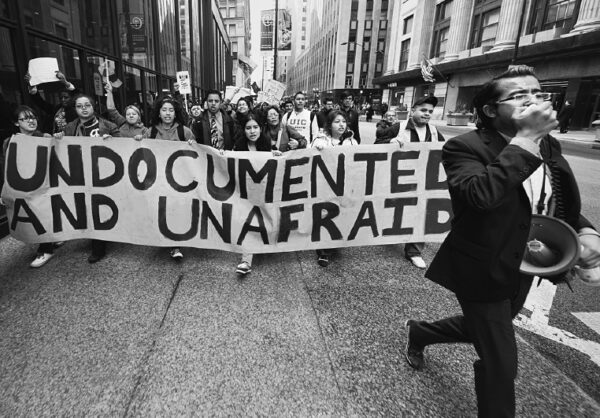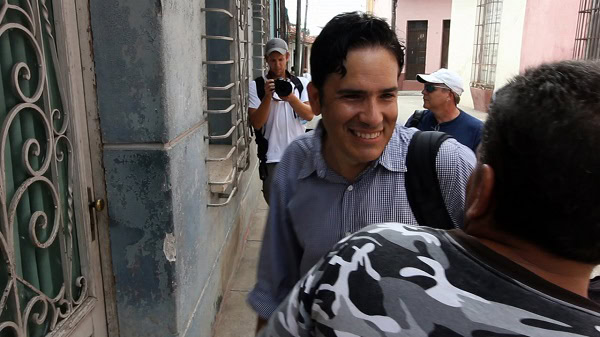Growing interest in and debate about multiculturalism in the undergraduate curriculum has recently inspired college and university faculty to discuss ways they might move beyond the “Western civilization” paradigm that came to dominate the liberal arts tradition in the 1950s and 1960s. In the study of history, similar forces have led to a renewed interest in world history. These developments challenge us as historians to rethink how we reach history to undergraduates and to make a case for the importance of historical understanding in the study of cultural diversity. Both the idea of cultural diversity and its reality within American society are now understood to be the products of historical forces and appropriate subjects for historical study. Historians are well prepared to explore these issues with students, simultaneously contributing to an understanding of cultural diversity and making a case for the relevance of historical thought in this broader educational project.1
As an American social historian whose teaching has focused on ethnic history, labor history, and women’s history. I have listened sympathetically to the recent calls for curricular reform. After all, these efforts are aimed at the same sort of broadening of perspective and greater inclusivity that have been major features of social history in the past two decades. Still, I have not dramatically refashioned the courses I teach in response to this movement. I only became aware of the new possibilities posed by multiculturalism in the last year in the course of participating in an innovative program at Binghamton University known as “Languages Across the Curriculum.”
For some time now there has been a movement, chiefly among faculty in languages and linguistics, to promote the teaching of foreign languages outside of traditional courses in language instruction.2 Proponents argue that students will learn a language more readily when they have a real need to use that language and can apply their knowledge outside of a language learning setting.3 With support from a grant from the Fund for the Improvement of Post-Secondary Education of the Department of Education, Ellen Badger. Marilyn Gaddis Rose, and H. Stephen Straight of Binghamton University developed a Languages Across the Curriculum program (LxC) that offers support to faculty interested in seeing their students do discipline-specific work in their courses in a language other than English.4 In the fall of 1993. I contacted LxC staff to discuss the possibility of drawing on the program’s resources in the teaching of an undergraduate lecture course on immigration and ethnicity in United States history.
I did not have particularly great expectations as I embarked on the project. I thought perhaps 10 or l2 students would have an opportunity to read a few articles on immigration themes in French or Spanish, and while their education would be enriched, I doubted that the class as a whole would be much affected by the project. I was not prepared for the students’ reception to the concept of Languages Across the Curriculum or the difference the project would make in the course as a whole. When I mentioned the prospect of foreign-language study groups in the first week of the class, about 20 students expressed interest; a week later when I handed out forms on which students could indicate their interest in particular languages. 30 students signed up for study groups in Korean, Spanish, French, Chinese, Italian, and Russian. Out of a class of about 80 students, more than a third wanted to take part in voluntary study groups calling for an as yet ill-defined extra amount of work on their part. The numbers were surprising. I had expected that there would be many immigrants and children of immigrants in the class—teaching the class four previous times had acquainted me with the diversity of the student body. There were evidently, in addition, a fair number of students who bad done some language study and viewed the study groups as an effective way to reinforce their learning.
By the middle of the semester, the study groups had been organized and 28 students were meeting an hour a week for discussion in English of readings in Korean, Spanish, French, and Chinese. Limited demand and difficulties in finding source materials had made it impossible to support the two students with interests in Italian and Russian. Two of the four study group leaders were history graduate students; three of the four were foreign students. All worked in conjunction with staff of the LxC program to develop skills in working with students with varied language backgrounds and met with me to develop weekly assignments that contributed to the broader goals of the course.
The study groups permitted students to focus on particular interests in a way that is unusual in a survey course aimed at first- and second-year students. The course offers a rapid-fire, 15-week survey of four centuries of immigration to the United States. Those students enrolled in the study groups explored the oral testimony of French Canadian mill operatives in New England, Korean-black tensions exposed by the 1992 Los Angeles riots, Puerto Rican migration to New York City and Nuyorican literature, and short stories written by Chinese Americans. Moreover, these students were able to explore the experiences of one particular group of immigrants within a broader course that developed a view of immigration as a whole and that permitted them to compare and contrast the experiences of different groups.
The resulting educational enrichment was not limited to the students who participated in the separate study groups, because all students also attended weekly sections where they discussed the regular reading assignments that were required of all students in the course. And while the study groups focused exclusively on specific ethnic groups, the sections permitted, in fact required, a much broader perspective of the students. However, the study group students brought their focused interests and depth of knowledge into the regular section meetings and thus exposed other students to the experiences of ethnic groups that were otherwise not the focus of the weekly readings.
Student responses to the foreign-language study groups were uniformly positive. Both in terms of language-learning and course content, students felt they had benefited from the experience. As one student noted in an end-of-term evaluation, “It was a good experience [to] read ‘real’ Spanish [,] not ‘classroom’ Spanish.” Several students commented that the study groups permitted them to focus on topics otherwise not treated in the broader lectures and reading assignments. The personal significance of this sharper focus was evident in the comment of one student who appreciated the program’s ”re-introducing my culture and language back to me, understanding the assimilation as well as the preservation of [Chinese] culture in my life.”
Korean American students, now the’ largest Asian American group at Binghamton University, particularly appreciated the focus their study group provided. In their evaluations they commented positively on the opportunity to discuss their personal experiences and connect them to general issues in the lives of Korean Americans. Three students added that they hoped to take a Korean language course, noting in complaint that the university did not offer any. Thus, the Languages Across the Curriculum program permits a broadening of language instruction and offers evidence of student interest that may lead to the expansion of language courses in the future.5
The experience of Languages Across the Curriculum within the context of a survey course on immigration and ethnicity in United States history offers a model for integrating concerns about multicultura1ism into the undergraduate curriculum. For those anxious about a “balkanization” of the curriculum into numerous narrow courses focusing on different ethnic groups, this experience offers a way to achieve both breadth and focus. Students can address specific ethnic interests, but they do so within a course that places the experiences of distinct groups within a broader framework of American ethnicity. In addition to their focused study groups on French Canadians, Puerto Ricans, or Korean Americans, students take part in discussion sections with all members of the class and deal with groups and issues beyond their own particular ethnic experience. They come to realize that other groups had to deal with barriers that they otherwise might think were unique to their own ethnic experience. The understanding that a great many Americans feel tom between two cultural identities comes as a revelation to many students and permits them to see difference as something that unites as well as divides Americans.
In turn, students without a strong sense of ethnic identification interact with students who are immigrants or the children of immigrants and come to appreciate the subtle and not-so-subtle ways that discrimination has shaped the immigrant experience in the United States. Both groups of students read about the ways that native- born Americans relied upon constructions of race to oppose successive groups of immigrants and they come to see similarities between the treatments of “Palatine Boors” in Pennsylvania in the 18th century, Chinese immigrants in California in the 19th century, Slavic immigrants at the turn of the 20th Century, and Haitian refugees in the 1990s.
For a conscientious ins1ructor plagued by the contradictory demands of offering a broad interpretive framework and still wanting to “cover” the diverse experiences of numerous immigrant groups in the United States, Languages Across the Curriculum offers a way out of the bind. One does not have to address every group in lectures and readings, but can develop parallel minicourses that are carried out in the separate language study groups. This also means that students taking a particular course will, in many cases, be having somewhat different experiences over the course of the term. It becomes the ins1ructor’s responsibility to work with study group leaders and teaching assistants to assure a basic consistency across lectures, readings, study groups, and sections. At times, the course came to feel a bit like a three-ring circus, but the complexity and richness (and occasional confusion) were all symptoms of an experience that had much to offer students.
The model described here is not limited simply to courses focusing on immigration and ethnic history. Obviously world history courses could effectively employ foreign-language study groups, but so also could European and Asian history courses. The history of science might well become a very different course if students read primary sources in Chinese, Arabic, French, German, and English. Certainly colonial American history would take on a new look if students were reading Spanish, French, and Portuguese sources as well as the more commonly examined English ones.6 As historians we are all trained to look for confirming and countervailing evidence and to appreciate different perspectives on events in the past. What better way to help our students today understand this approach to the past and at the same time come to grips with a multicultural world in the present than to encourage them to view our past and present through the varied lenses that different cultures employ?
Notes
- See, for instance, John Higham, “Multiculturalism and Universalism: A History and Critique,” American Quarterly 45 (June 1993) 195-220, and critical responses by Gerald Early Gary Gerstle, Nancy A. Hewitt, and Vicki L. Ruiz. [↩]
- For an overview of the various components of this nationwide Languages Across the Curriculum movement, see Merle Krueger and Frank Ryan, eds., Language and Content: Discipline Based Approaches to Language Study (Lexington, Mass.: D.C. Heath, 1992). [↩]
- See, for instance, H. Stephen Straight, “Languages Must be Taught ‘Across the Curriculum’ to Insure that Students Develop Functional Skills,” The Chronicle of Higher Education (Mar. 7, 1990): B2. [↩]
- The details of Binghamton’s campuswide LxC program are laid out, along with comment and critiques concerning this and related effort across the country, in H. Stephen Straight, ed. Languages Across the Curriculum, in Translation Perspectives VII (Binghamton, N.Y.: Center for Research in Translation, State University of New York at Binghamton, 1994). [↩]
- This development did occur and Korean language instruction was offered in fall 1994. [↩]
- For a critique of the teaching of colonial American history and a proposal to move beyond its Anglo-centered focus, see James Axtell, “Europeans, Indians, and the Age of Discovery;·American History Textbooks,” American Historical Review 92 (June 1987): 621-32. [↩]
Thomas Dublin is professor of history at Binghamton University. The author extends his thanks to Kathryn Kish Sklar and H. Stephen Straight for their helpful comments on an earlier draft of this article.


